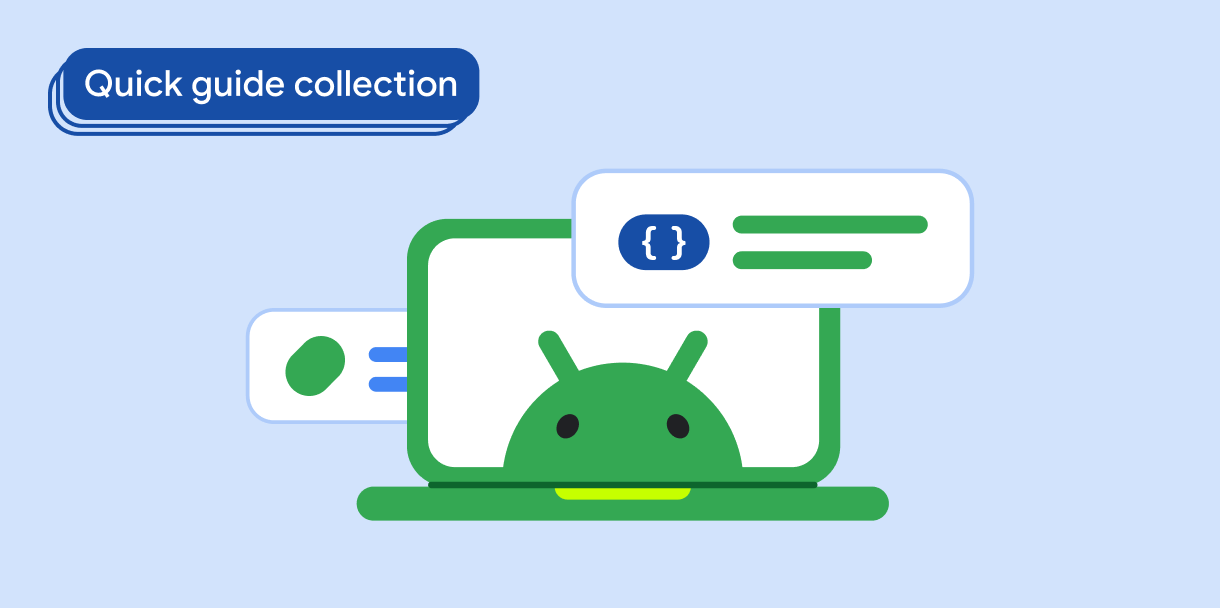تعرِض مؤشرات التقدّم حالة العملية بشكل مرئي. وتستخدم هذه التطبيقات الصور المتحركة للفت انتباه المستخدم إلى مدى قرب اكتمال العملية، مثل تحميل البيانات أو معالجتها. ويمكن أن تشير أيضًا إلى أنّه تتم معالجة الطلب، بدون الإشارة إلى مدى قرب اكتماله.
فكِّر في حالات الاستخدام الثلاث التالية التي قد تستخدم فيها مؤشر التقدّم:
- تحميل المحتوى: أثناء جلب المحتوى من شبكة، مثل تحميل صورة أو بيانات لملف شخصي لأحد المستخدمين
- تحميل الملف: يمكنك تقديم ملاحظات للمستخدم حول الوقت الذي قد يستغرقه التحميل.
- المعالجة الطويلة: أثناء معالجة التطبيق لكمية كبيرة من البيانات، أعرِف المستخدم بمدى اكتمال العملية.
في التصميم المتعدّد الأبعاد، هناك نوعان من مؤشرات التقدم:
- تحديد: تعرِض هذه الحالة مقدار التقدّم الذي تمّ تحقيقه بدقة.
- غير محدّد: يتم تشغيل الصور المتحركة باستمرار بغض النظر عن مستوى التقدّم.
وبالمثل، يمكن أن يتّخذ مؤشر التقدّم أحد الشكلَين التاليَين:
- خطي: شريط أفقي يملأ من اليسار إلى اليمين
- دائري: دائرة يزداد طولها حتى تشمل محيط الدائرة بالكامل.
توافق الإصدار
يتطلّب هذا التنفيذ ضبط الحد الأدنى من إصدار حزمة SDK لمشروعك على المستوى 21 من واجهة برمجة التطبيقات أو إصدار أحدث.
التبعيات
إنشاء مؤشرات محدّدة
يعكس المؤشر المحدّد مدى اكتمال الإجراء بدقة. استخدِم LinearProgressIndicator أو CircularProgressIndicator
العنصرَين القابلَين للتجميع وأدخِل قيمة للمَعلمة progress.
يوفّر المقتطف التالي مثالاً مفصّلاً نسبيًا. عندما يضغط المستخدم
على الزر، يعرض التطبيق مؤشر التقدّم ويشغّل دالّة برمجية
متعدّدة المهام تزيد قيمة progress تدريجيًا. يؤدي ذلك إلى تكرار
مؤشر التقدّم صعودًا بدوره.
النتائج
عند اكتمال التحميل جزئيًا، يظهر المؤشر الخطي في المثال السابق على النحو التالي:
وبالمثل، يظهر المؤشر الدائري على النحو التالي:
إنشاء مؤشرات غير محدّدة
لا يشير المؤشر غير المحدّد إلى مدى قرب اكتمال العملية، ولكنه يستخدم الحركة للإشارة إلى المستخدم بأنّ المعالجة جارية، ولكن بدون تحديد أي درجة من الاكتمال.
لإنشاء مؤشر تقدم غير محدّد، استخدِم العنصر القابل للتجميع LinearProgressIndicator
أو CircularProgressIndicator، ولكن لا تُدخل قيمة لprogress. يوضّح المثال التالي كيفية تبديل أحد مؤشرات
القيمة غير المحدّدة من خلال الضغط على زر.
النتائج
في ما يلي مثال على هذا التنفيذ عندما يكون المؤشر نشطًا:
في ما يلي مثال على عملية التنفيذ نفسها ولكن باستخدام
LinearProgressIndicator بدلاً من CircularProgressIndicator.
النقاط الرئيسية
على الرغم من توفّر العديد من العناصر القابلة للتجميع التي يمكنك استخدامها لإنشاء مؤشرات مستوى التقدّم المتوافقة مع لغة تصميم Material Design، لا تختلف مَعلماتها كثيرًا. في ما يلي المَعلمات الرئيسية التي يجب أخذها في الاعتبار:
progress: مستوى التقدّم الحالي الذي يعرضه المؤشر مرِّرFloatبين0.0و1.0.color: لون المؤشر، أي الجزء من العنصر الذي يعكس مستوى التقدّم والذي يشمل العنصر بالكامل عند اكتمال مستوى التقدّمtrackColor: لون المسار الذي يتم رسم المؤشر عليه
المجموعات التي تتضمّن هذا الدليل
هذا الدليل هو جزء من مجموعات الأدلة السريعة المنظَّمة التي تتناول أهداف تطوير Android الأوسع نطاقًا:

عرض المكونات التفاعلية




